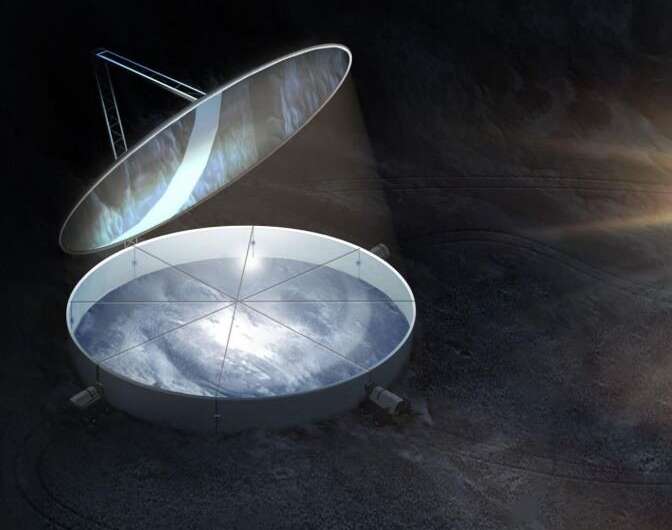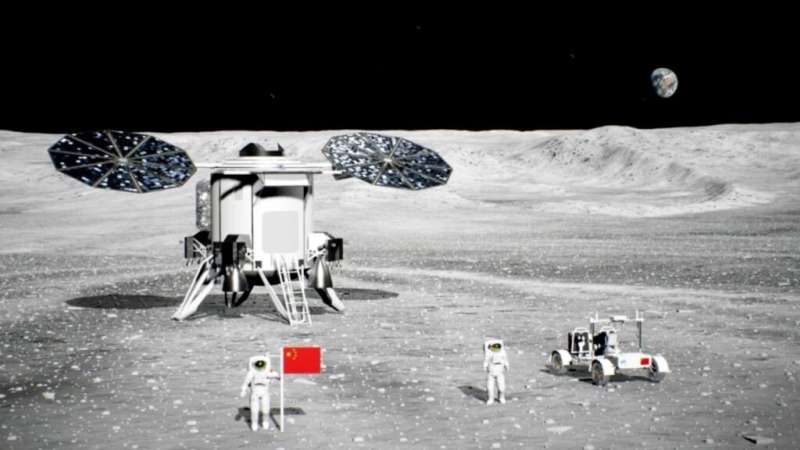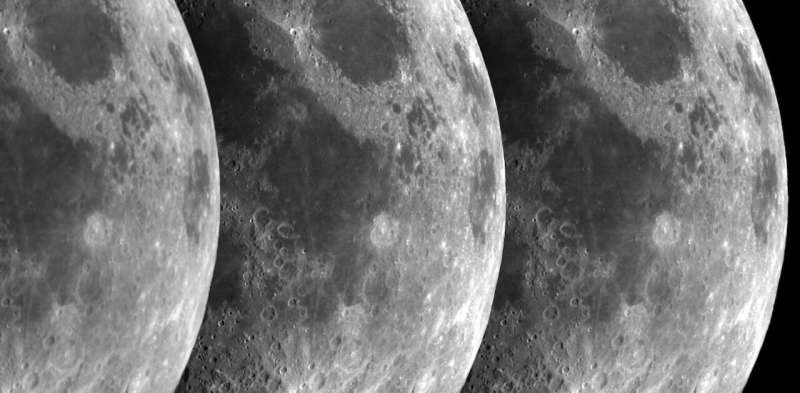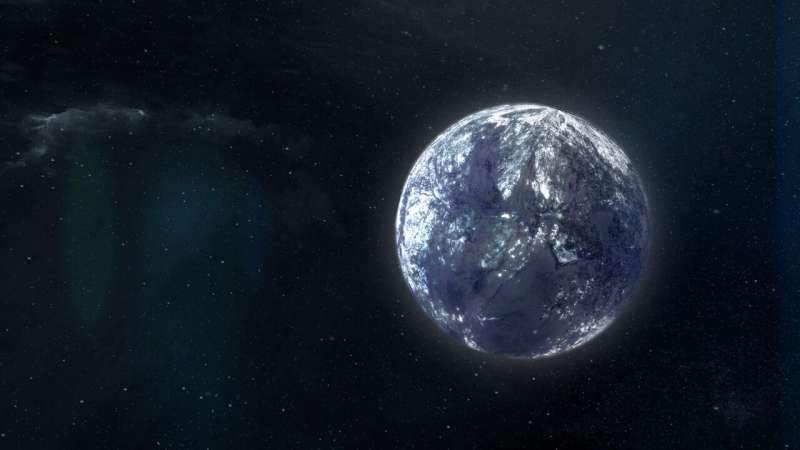Has the standard cosmological model been brocken or just cracked
Thursday, 20 July 2023 06:39 A global consortium of astrophysicists spearheaded by teams from the Max Planck Institute for Astrophysics in Germany, Harvard University in the United States, and Durham University in the United Kingdom, have taken a bold stride towards understanding the cosmos. The team has recently simulated the formation of galaxies and cosmic structures across vast expanses of space.
A unique aspect o
A global consortium of astrophysicists spearheaded by teams from the Max Planck Institute for Astrophysics in Germany, Harvard University in the United States, and Durham University in the United Kingdom, have taken a bold stride towards understanding the cosmos. The team has recently simulated the formation of galaxies and cosmic structures across vast expanses of space.
A unique aspect o AROBS Engineering Takes Lead Role in Space Rider Project Software Verification and Validation
Thursday, 20 July 2023 06:39 The Romanian software services company, AROBS Engineering, part of AROBS Group, has been announced as the primary industrial partner and consortium leader for the software verification and validation of Europe's first reusable space transportation system, Space Rider. This project, funded by the European Space Agency (ESA), is expected to revolutionize access to low orbit.
Space Rider's ce
The Romanian software services company, AROBS Engineering, part of AROBS Group, has been announced as the primary industrial partner and consortium leader for the software verification and validation of Europe's first reusable space transportation system, Space Rider. This project, funded by the European Space Agency (ESA), is expected to revolutionize access to low orbit.
Space Rider's ce CHAPEA Mars Simulation program a test bed for food systems and crop cultivation
Thursday, 20 July 2023 06:39 The initial crew selected for NASA's Crew Health and Performance Exploration Analog (CHAPEA) mission 1, a ground-based Mars habitat simulation, is set to evaluate the efficacy of growing fresh produce in isolation. Commenced on June 25 at NASA's Johnson Space Center in Houston, the four-member crew will conduct a series of operations over a year's span, and won't have the facility of fresh food
The initial crew selected for NASA's Crew Health and Performance Exploration Analog (CHAPEA) mission 1, a ground-based Mars habitat simulation, is set to evaluate the efficacy of growing fresh produce in isolation. Commenced on June 25 at NASA's Johnson Space Center in Houston, the four-member crew will conduct a series of operations over a year's span, and won't have the facility of fresh food Ancient river is helping Perseverance Mars Rover do its work
Thursday, 20 July 2023 06:39 The six-wheeled geologist is getting some assistance in its search for diverse rock samples that could be brought to Earth for deeper investigation.
NASA's Perseverance Mars rover sealed the tube containing its 20th rock core sample on June 23 (the 832nd Martian day, or sol, of the mission), and the mission's science team is excited about its potential.
That's because this sample was
The six-wheeled geologist is getting some assistance in its search for diverse rock samples that could be brought to Earth for deeper investigation.
NASA's Perseverance Mars rover sealed the tube containing its 20th rock core sample on June 23 (the 832nd Martian day, or sol, of the mission), and the mission's science team is excited about its potential.
That's because this sample was New study reveals Roman Telescope could find 400 Earth-mass rogue planets
Thursday, 20 July 2023 06:39 New research by scientists from NASA and Japan's Osaka University suggests that rogue planets - worlds that drift through space untethered to a star - far outnumber planets that orbit stars. The results imply that NASA's Nancy Grace Roman Space Telescope, set to launch by May 2027, could find a staggering 400 Earth-mass rogue worlds. Indeed, this new study has already identified one such candida
New research by scientists from NASA and Japan's Osaka University suggests that rogue planets - worlds that drift through space untethered to a star - far outnumber planets that orbit stars. The results imply that NASA's Nancy Grace Roman Space Telescope, set to launch by May 2027, could find a staggering 400 Earth-mass rogue worlds. Indeed, this new study has already identified one such candida Boeing's Millennium Space Systems amplifies small satellite production
Thursday, 20 July 2023 06:39 Millennium Space Systems, a subsidiary of Boeing [NYSE: BA], marked an important milestone on July 18, 2023, as it celebrated the success of its Small Satellite Factory (SSF). Initially unveiled to the public in 2022, the SSF has risen to the challenge of satisfying an uptick in contracts for proliferated satellite constellations.
This rapid expansion of production capabilities reflects th
Millennium Space Systems, a subsidiary of Boeing [NYSE: BA], marked an important milestone on July 18, 2023, as it celebrated the success of its Small Satellite Factory (SSF). Initially unveiled to the public in 2022, the SSF has risen to the challenge of satisfying an uptick in contracts for proliferated satellite constellations.
This rapid expansion of production capabilities reflects th Wind River VxWorks software chosen for Astroscale's Space Debris Solution ELSA-M
Thursday, 20 July 2023 06:39 Wind River, an industry leader in intelligent system software, has announced that its VxWorks software will be utilized in the command of the Astroscale ELSA-M Servicer spacecraft's On-Board Computer (OBC). This announcement reflects Wind River's ongoing commitment to supporting the unique challenges and complexities of space missions.
Astroscale, a company dedicated to developing innovati
Wind River, an industry leader in intelligent system software, has announced that its VxWorks software will be utilized in the command of the Astroscale ELSA-M Servicer spacecraft's On-Board Computer (OBC). This announcement reflects Wind River's ongoing commitment to supporting the unique challenges and complexities of space missions.
Astroscale, a company dedicated to developing innovati Shenzhou XVI crew set to conduct their first EVA
Thursday, 20 July 2023 06:39 The Shenzhou 16 astronauts aboard China's Tiangong Sspace Station are set for their first-ever spacewalk, as confirmed by the China Manned Space Agency.
In a recent press statement issued on Wednesday, the agency affirmed that the Shenzhou XVI team, which includes Commander Major General Jing Haipeng, Colonel Zhu Yangzhu, a spaceflight engineer, and Professor Gui Haichao, the science paylo
The Shenzhou 16 astronauts aboard China's Tiangong Sspace Station are set for their first-ever spacewalk, as confirmed by the China Manned Space Agency.
In a recent press statement issued on Wednesday, the agency affirmed that the Shenzhou XVI team, which includes Commander Major General Jing Haipeng, Colonel Zhu Yangzhu, a spaceflight engineer, and Professor Gui Haichao, the science paylo ESA preparing for “assisted reentry” of Aeolus spacecraft
Wednesday, 19 July 2023 23:13
The European Space Agency is in the final stages of performing an “assisted reentry” of an Earth science spacecraft, an effort that will attempt to bring the satellite down over the ocean in a little more than a week.
Space Force changed launch procurement plan due to concerns about capacity
Wednesday, 19 July 2023 20:46
The decision to add a third provider was driven by a projected growth in demand for satellite launches and concerns about a shortage of heavy-lift rockets later this decade.
We could get large amounts of water from the moon by directing the sun at it
Wednesday, 19 July 2023 17:51
One of the most commonly discussed challenges when starting our species' space exploration journey is how to get the resources necessary for life off of the Earth. Typically this is thought of as two things—water and oxygen, but, luckily, oxygen can be supplied by splitting apart a water molecule, so the most critical resource we could find in space is water.
Commonly called a "volatile" in the language of space resources, water has been the focal point of many plans for in-situ resource utilization on the moon, Mars, and elsewhere. Some of those plans have been well thought out, others not. One particular showed some promise when it was selected as part of NASA's Institute for Advanced Concepts (NIAC) funding back in 2019, and here we'll take a closer look at it.
The concept, published in a report titled "Thermal Mining of Ices on Cold Solar System Bodies" but hereafter referred to as "thermal mining," is the brainchild of George Sowers, a space resource expert and Professor of Mechanical Engineering at the Colorado School of Mines (CSM).
China will use two rockets to put humans on the moon
Wednesday, 19 July 2023 17:46
As of 2019, China began conducting preliminary studies for a crewed lunar mission that would take place by the 2030s. Two years later, the China National Space Agency (CNSA) and Roscosmos announced a partnership to create an International Lunar Research Station (ILRS) around the South Pole-Aitken Basin. The proposed timeline for development came down to three phases: Reconnaissance (2021–25), Construction (2025–35), and Utilization (2035–onward). Earlier this year, China announced that its space agency would send the first crewed mission to the lunar surface by 2030.
On July 12, during the 9th China (International) Commercial Aerospace Forum in Wuhan, China, Chinese officials offered additional information about its crewed lunar exploration program. This included Deputy chief engineer Zhang Hailian of the China Manned Space Engineering (CMSE) office announcing the preliminary plan for China's first crewed lunar mission. As Zhang illustrated with a series of animations, the mission will consist of two carrier rockets launching all the necessary elements to the moon, which will then rendezvous in orbit and land on the surface to conduct science operations.
Returning to the moon can benefit commercial, military and political sectors—a space policy expert explains
Wednesday, 19 July 2023 16:50
NASA's Artemis program aims to return humans to the moon for the first time in more than 50 years, with the first human landing currently scheduled for 2025. This goal is not just technically ambitious, but it's also politically challenging. The Artemis program marks the first time since the Apollo program that an effort to send humans to the moon has been supported by two successive U.S. presidents.
As a scholar of international affairs who studies space, I'm interested in understanding what allowed the Artemis program to survive this political transition where others failed. My research suggests that this program is not just about advancing science and technology or inspiring the public. It also offers practical benefits for the commercial sector and the military and an opportunity to reinforce U.S.
Sex in space: Why it's worrying that the space tourism sector hasn't considered the consequences
Wednesday, 19 July 2023 16:10
Humans have a knack for sharing intimate moments in unlikely places, as membership of the mile-high club demonstrates. So there is a significant chance that the launch of the space tourism sector may be swiftly followed by the first sex in space.
But having researched the issue, my colleagues and I believe that spacetourism companies haven't adequately prepared for the consequences of people joining what we could call the "Kármán line club" (referencing the 100km-high boundary between Earth and the rest of the cosmos).
Talk of space tourism has always been in terms of the distant future. But sub-orbital space tourism—short flights with only a few minutes of spaceflight and weightlessness—already exists. Tickets range from freebies, to costing millions of dollars.
Much longer flights are just around the corner. Companies such as Elon Musk's SpaceX have well-established track records of developing spacecraft faster than the public sector. SpaceX's larger and more capable Starship spacecraft will likely operate routinely in the next few years.
When, not if
Flights have been reserved and passenger lists assembled for private flights that will loop around the Moon.
New study reveals NASA's Roman could find 400 Earth-mass rogue planets
Wednesday, 19 July 2023 15:58
New research by scientists from NASA and Japan's Osaka University suggests that rogue planets—worlds that drift through space untethered to a star—far outnumber planets that orbit stars. The results imply that NASA's Nancy Grace Roman Space Telescope, set to launch by May 2027, could find a staggering 400 Earth-mass rogue worlds. Indeed, this new study has already identified one such candidate.
"We estimate that our galaxy is home to 20 times more rogue planets than stars—trillions of worlds wandering alone," said David Bennett, a senior research scientist at NASA's Goddard Space Flight Center in Greenbelt, Maryland, and a co-author of two papers describing the results. "This is the first measurement of the number of rogue planets in the galaxy that is sensitive to planets less massive than Earth.

